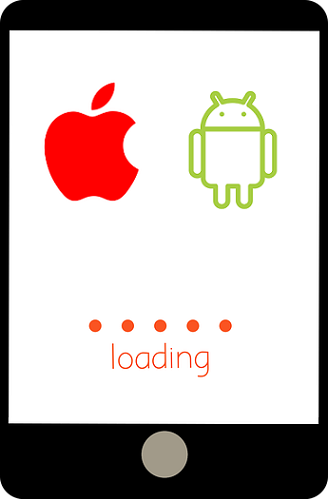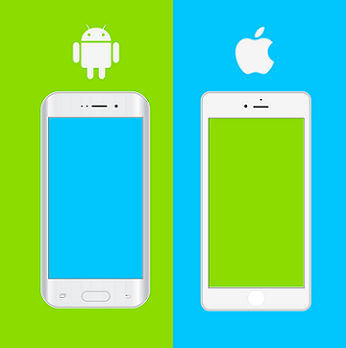The Apple Worldwide Developers Conference (WWDC) 2024 took place from June 3 to June 7. This year’s event was packed with several major announcements that highlighted Apple’s ongoing innovation across its product lines. Among the biggest announcements were the introduction of iOS 18, which features the new “Apple Intelligence” AI-powered functionalities designed to enhance user experience through advanced photo organization and privacy options.
Additionally, macOS Sequoia was revealed, bringing updates like iPhone mirroring and improved gaming capabilities, while visionOS 2 introduced new spatial photo features and enhanced UI controls for the Vision Pro headset.
Despite these advancements, some features were criticized for being reminiscent of functionalities available on Android for a long time, sparking discussions about the iterative nature of app design and development.
Knowing the key differences between iOS and Android app development can guide a business’s app design and development decisions. So, let’s explore these key differences between two of the world’s largest app platforms: iOS and Android.

Design principles
-
iOS design principles:
Apple’s design philosophy centers around simplicity and clarity. The Human Interface Guidelines (HIG) provide a framework for creating intuitive and consistent user experiences. This means that iOS apps often have a uniform look and feel, with familiar design patterns such as tab bars and navigation controllers ensuring a smooth and seamless user experience.
-
Android design principles:
Android embraces Material Design, which emphasizes bold, graphic and intentional design. It focuses on motion and visual interaction to create a more dynamic user experience. While there are guidelines to follow, Android offers greater flexibility, allowing for diverse UI components and layouts, such as bottom navigation bars and side drawers.
Find out what are the 5 best practices for mobile application design.
Development environments
-
iOS development:
In iOS development, Xcode is used as the integrated development environment (IDE) and Swift as the primary programming language. Apple’s ecosystem is known for its stringent app review process which ensures high-quality and secure apps. The development environment is optimized for a limited number of devices, making it easier to maintain performance and consistency.
-
Android development:
Android development relies on Android Studio and Kotlin or Java as the primary programming languages. The open-source nature of Android allows for a flexible and customizable development process. However, the wide range of devices and screen sizes can lead to fragmentation, posing challenges in ensuring consistent performance across all devices.
Learn more about the 2 main approaches in mobile app development – cross platform Vs. native app development.
User Interface (UI) and User Experience (UX)
-
iOS UI/UX:
iOS apps are known for their smooth transitions and gestures, providing a fluid user experience. The consistent design across Apple devices makes navigation intuitive and minimalistic, enhancing user satisfaction.
-
Android UI/UX:
Android offers extensive customizability and personalization options. Widgets and home screen customization are key features that differentiate Android from iOS. This flexibility allows users to tailor their experience but it may also lead to inconsistencies in design and user experience.
App Store vs. Google Play Store
-
App Store:
Apple’s App Store is known for its rigorous submission and review process. While this can be seen as a hurdle, it ensures that apps are of high quality and are secure. The controlled ecosystem often translates to higher monetization potential for developers.
-
Google Play Store:
The Google Play Store has a more straightforward submission process, making it easier for developers to get their apps published. This broader reach is beneficial for targeting a diverse audience but it also means that quality control is less stringent compared to the App Store.

Performance and optimization
- iOS performance:
iOS apps are optimized for fewer devices which generally leads to better performance. The uniformity in hardware and software allows developers to efficiently use system resources, ensuring smooth operation across devices.
- Android performance:
Android apps need to cater to a wide range of devices with varying specifications. This can result in performance issues and requires developers to use APK splits and dynamic delivery methods to optimize app size and performance. APK which stands for Android Application Package is a file containing all the data needed for installing and running an Android app.
The Split APK method creates smaller APKs where each APK carries a part of the app specific to a particular device configuration. This way, only the APK specific to the device type needs to be downloaded. This reduces app size and the time needed for installation, improving app performance.
Understanding the key differences between iOS and Android app development is crucial for mobile app designers and developers. While iOS focuses on simplicity, consistency and a controlled ecosystem, Android offers flexibility, customization and a broader reach. Both platforms have their unique strengths and challenges and the choice between them depends on the app’s specific needs, target audience and budget of a project.
Here are 3 reasons why mobile apps are more relevant than ever.
By staying informed about these differences, businesses can make more strategic decisions and invest in mobile applications that offer the best possible user experience, regardless of the platform. The continuous evolution of both iOS and Android ensures that there are always new features and best practices to learn and apply in this competitive digital marketplace.
